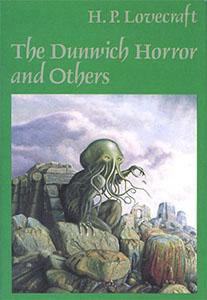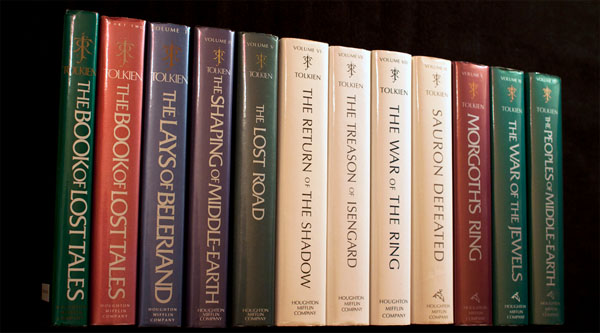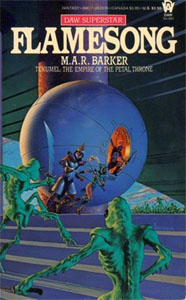
This writing sample covers the first part of Chapter One. It was written when I was 16 years old.
CHAPTER ONE
Kalen watched the secondary monitors of his Red Wolf ‘mech, more interested in the tactical information related there than in the dense undergrowth being crushed around him as he moved quickly through the forest.
“Robert, how’s your little Adder holding up?” The Adder-class ‘mech was one of the smallest, and they had lost precious moments earlier when it had become ensnarled in a patch of thorny vines.
“Pretty good, Kale. I’m keeping behind you, using the trail you’re beating down. Anything I’ve got trouble with, Steve helps me out with.”
Steven was off to Kalen’s right, moving along as quickly as possible in his humanoid-Hellbringer. He raised the ‘mech’s hand in a wave of acknowledgment.
Kalen smiled. “All right, we’re going to start bearing northwest now. Keep com silence until my strike order. No need to give away our presence with a stray signal burst.”
“Roger,” the voices of his two lieutenants overlapped on the frequency.
Ten minutes earlier a distress signal had reached Diamond Outpost where Kalen had been scheduled to serve garrison on the weekly rotation cycle. Kalen may have been the Helix Hero of the House of Alcrom, but it didn’t excuse him, or the Guard company he led, from the routine duties of being mechwarriors.
On the north road between the Kolan Heights and Poytr Point an Alcrom weapons convoy had been waylaid by the forces of House Ethaois. Even now, looking above the trees which brushed around his ‘Mech, Kalen could see the ineffective laser blasts of the convoy as it raced along the road away from its pursuers. If he and his Guard didn’t get there soon the convoy would be probably be lost within a matter of minutes.
A harsh tone sounded from his monitors and he twisted his head away from the cockpit’s visual display and back to the secondary screens. A tight line of bright dots had appeared, roving eastward. The convoy!
Simultaneously five more dots — the Ethaois ‘mechs — blinked onto the screen as well. A Sharpshooter and a Wasp were positioned on either side of the road, straddling the convoy. A speedy Hummingbird lagged behind them on the far side of the road from Kalen’s position. Directly behind the convoy, obviously cutting off any form of retreat, was a large Crusader. Further back there was a Quasar, apparently climbing a nearby hill.
Kalen toggled his com unit back on, “Okay guys, looks like we’re not slackers after all. Let’s nab the three closest first. Robert — see if you can keep that Quasar busy; Steve, nail the Wasp. I’ve got the Sharpshooter. We jump in three…two…one…”
At virtually the same moment the three pilots hit their ‘mech’s jump jets and sailed clear of the forest, reaching the apex of their jumps metres above the treetops.
Their actions were not a moment too soon. As the Quasar topped the hill it was climbing, it released a quick volley of LRMs — blasting the road ahead of the convoy into impassable rubble and sending the lead convoy vehicles caroming into the strip of cleared land on either side of the forest way.
Kalen brought his ‘mech down smoothly in the middle of the road. Twisting the torso of his Red Wolf around, he quickly peppered the Sharpshooter with his PPC before the Ethaoin pilot had a chance to react. He quickly checked on his two friends, noting with satisfaction that Steven had already engaged the Wasp and Robert was making his way up the hill towards the Quasar, before turning his attention back to his own opponent.
The Red Wolf‘s PPC hadn’t done more than superficial damage to the Sharpshooter, who was now returning fire — peppering Kalen with a series of short blasts from his shoulder-mounted lasers. In response, Kalen stepped his ‘mech out of the laser blasts for a moment and released a volley of SRMs at his opponent. As he had expected, the Sharpshooter’s pilot activated his anti-missile systems and reduced his barrage to shrapnel, but at least the laser was abated for a moment. Kalen toggled his autocannon and watched with satisfaction as it tore away the armor of the opposing ‘mech.
Unexpectedly the Sharpshooter’s jump jets flared to life, lifting it off the ground and away from Kalen’s fire. Having failed to anticipate his opponent’s action, Kalen pushed hard against his ‘mech’s foot pedals, urging the huge machine into a run, only to feel the ‘mech jerk away from his control as an explosion shook the cockpit.
As the Red Wolf twisted hard, spinning the Sharpshooter off the primary screen, Kalen quickly realized what had happened. The Sharpshooter’s pilot had used his ‘mech’s jump to effectively conceal the launch of a single missile towards Kalen; and Kalen, in his rush to pursue his opponent had ignored the warning signals on his secondary monitors.
Angry with himself for his carelessness, Kalen quickly jabbed at his controls, bringing his ‘mech back under control and swinging his bullet-like torso around to face the position where the Sharpshooter had last been in time to see a wave of LRMs heading towards him.
Instantly his autocannon roared to life, picking the helpless missiles out the air, as he launched his own missiles, but these swept under the Sharpshooter, which had already initiated a second jump to close the distance between them again.
But this time Kalen wasn’t going to give his opponent a chance to conceive a second offensive, instead he raised his ‘mech’s left arm and began firing the laser there. Simultaneously his PPC began to pulse and the missiles held in pods all around the main body of his BattleMech streamed off on chemical propellants.
The Sharpshooter pilot, despite his momentary surprise at the ferocity of Kalen’s assault, managed to emerge relatively unscathed. He managed to destroy the majority of the Red Wolf‘’s missiles before they could strike, and his adept maneuvering lessened the damage which might have been wrought by the PPC. However, the cumulative effect of the attack gained its intended goal – several missiles struck one of his leg joints, and the laser fire found weak spots along the attachment point of his left arm, dropping it – and the anti-missile system it contained – useless to his side.
In Kalen’s cockpit the temperature was soaring and the sweat dripped from his brow, but it barely caught his attention as he launched another volley of missiles against the Sharpshooter.
Without the defenses in its arm the Sharpshooter was helpless against the Red Wolf’s final attack, and Kalen watched as the enemy ‘mech was reduced to a ball of flame. Its destruction gave him a chance to bring his ‘mech to a halt while he took assessment of the battlefield, allowing his heat sinks to laboriously remove the heat build-up he had accumulated so quickly.
To his left Robert had been intercepted by the humanoid Crusader before reaching the Quasar, which still stood passively atop the hill. Robert’s adept handling of the tiny Adder seemed to be keeping the conflict roughly even, but off to Kalen’s right Steven was faring worse. The Hummingbird had moved up in support of the Wasp and their dual assault was seriously wearing down the Hellbringer’s defenses, pushing him farther back into the forest.
Kalen quickly checked his heat levels and, noting that they were back within acceptable levels, started his ‘mech towards Steven’s position. Together the two of them should be able to eliminate the smaller ‘mechs and then join Robert against the Quasar and Crusader.
But before he had even begun to cross the distance, he saw Steven swing his Hellbringer’s torso towards the enemy Wasp and release successive waves of missile at the smaller ‘mech – overpowering it’s weakened autocannon and punching several successful hits through, forcing the pilot to eject before his destabilized fusion plant blew. Even Kalen was able to see the tactical impracticality of the maneuver, however. In focusing his attention on the Wasp Steven had left his ‘Mech’s back open to an undefended assault by the Hummingbird, which now took the advantage and pulverized the Hellbringer unmercifully.
With a final few steps Kalen pulled his Red Wolf within range. Quickly he fired a handful of LRMs at the Ethaoin Hummingbird, hoping to distract the ‘mech from its helpless victim. Even as the missiles began their deadly flight, however, Kalen knew they came too late to save the Hellbringer – already Steven’s ejection seat carried him in a graceful arc away from the exploding remains of his treasured ‘mech.
But even in death the Hellbringer cursed its killer, holding the attention of the Hummingbird’s pilot for a moment too long. Kalen’s first attack struck uncontested even as a second was being launched. The now heavily damaged ‘Mech slowly turned to face his new opponent, slicing Kalen’s second salvo into useless fratricide.
Kalen smiled as he engaged his jump jets, cutting the distance of the fight to within meters as he toggled his LRM system off-line and synched his short-range weapons into the primary controls. The rage of battle now pulsed through his blood, guiding the lethal paces through which he put his ‘Mech.
The Hummingbird fired his own missiles as the Red Wolf descended, but Kalen’s autcannon swatted them almost contemptuously out of the sky before turning its attention to the missile racks below the Hummingbird’s cockpit. As Kalen’s PPC joined in the barrage, the Hummingbird’s pilot seemed to realize what lay in store and ejected mere moments before the missiles exploded in their pods, blasting the ‘mech into a smoldering mass of blackened metal.
The Red Wolf’s barrage snapped off as the Hummingbird exploded, and Kalen swung his ‘Mech around, loping off at a near-run towards the hill where the Quasar still squatted, watching the Adder and Crusader battle in stalemate below it. Like a strutting bird, the Red Wolf mounted the hill and moved quickly to its summit as the Quasar’s pilot turned it to face the newcomer.
A pause came to Kalen’s frenzied action as he crested the hill. He watched as the Quasar he faced turned slowly towards him until the two mighty BattleMechs stood face to face, each in contemplation of the other.
The moment held for too long. Kalen sensed it. It stretched beyond where one pilot or the other should long since have broken it in a fiery hail of death. It was as if a stalemate had settled upon the two. As if some moment where combat could have begun had been passed by, and now both were held in a loop of inaction which might continue forever.
Kalen’s com-unit crackled to life.
“Helix Commander. Halt all offensive action. Withdraw immediately.”
Kalen frowned. The order made no sense. The convoy was not yet secured, and the Helix Guard’s defensive action was proving successful. Why the withdrawal?
“Repeat command.”
“Repeat. This is Diamond Outpost. Halt all offensive operations. Repeat. Halt offensive operations.”
“On who’s authority?” Kalen was grimacing now. This was the work of a bureaucrat who couldn’t stand the loss of the Hellbringer, he was sure of it.
“On the authority of—”
The com-officer’s voice was cut off and Kalen could hear the muted sounds of motion on the other end of the unit before a new voice came onto the channel.
“It’s on my authority, Kalen. Withdraw immediately. I’ll explain everything when you return.”
The voice was soft, mellowed with the wisdom of age, and Kalen knew it well. Lord J’hon. Current ruler of the House of Alcrom. He had long been a friend and mentor to the Helix who now sat in the Red Wolf’s cockpit. Kalen had long trusted his judgment, but he could not accept this.
“Enemy ‘mechs make safe withdrawal is impossible. I—”
Abruptly the jump jets of the Quasar came to life. Kalen cut himself off as his fingers tensed over the controls which would launch his defensive systems, but the Ethaoin ‘mech was receding from him, the jets carrying it down the far side of the hill and away from Kalen.
Simultaneously a second channel came to life on the com-unit.
“Ethaoin Crusader in retreat,” Robert’s voice echoed in Kalen’s cockpit. “Permission to pursue?”
Kalen hesitated for a moment. Then, “Negative. Return to base.”
“What?” Robert’s surprise mirrored his own.
“Return to Diamond Outpost. Kalen out.”
Kalen flicked Robert’s channel off and then spoke again, “Diamond Outpost, I am returning to base.”
He turned his Red Wolf around. He wanted some answers.
FINAL THOUGHTS
My major influence in writing this was Robert Thurston’s Jade Phoenix Trilogy. I was given copies of the trilogy when I visited the Westfield Comics warehouse in the late ’90s and it remains one of my favorite pieces of pulp fiction. (Westfield Comics was the way I used to get my monthly comics as a kid: They’d mail you a catalog. You’d fill out an order form of everything you wanted. And then a big box full of amazing things would arrive on your doorstep. They’re still around and they’re still great people. But I digress.)
My original notes for the novel also include this gem: “It should be a running joke for at least the first few chapters that each chapters starts with ‘WHAT?!’ Kalen asks it in the first chapter, Natasha in the second, and finally Giles in the third.”
(I was apparently also enamored with spelling the word “maneuver” as “manuever”. I’ve corrected it here, but I’m guessing it didn’t exactly endear my pitch to the FASA editor, either.)














